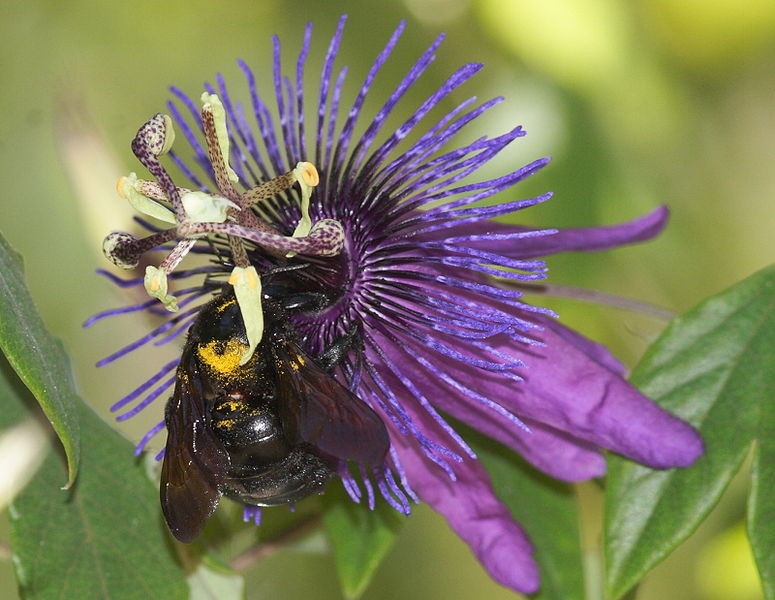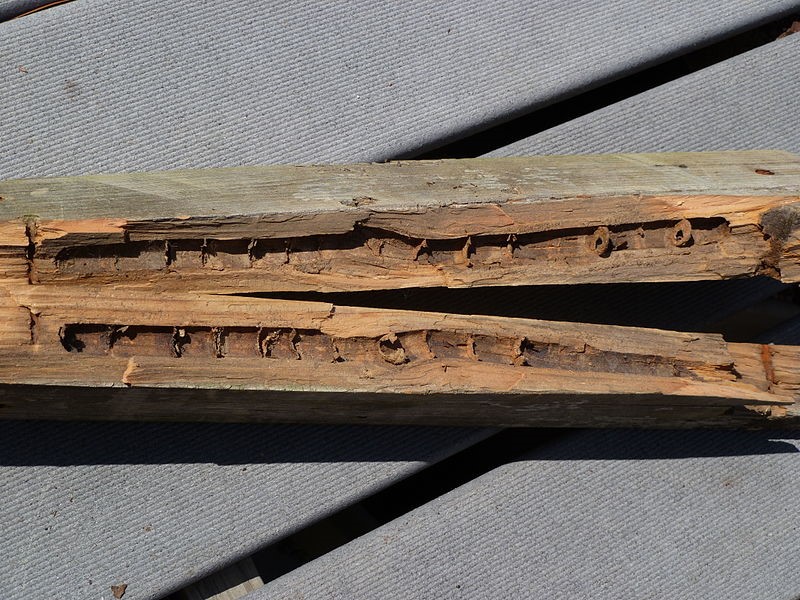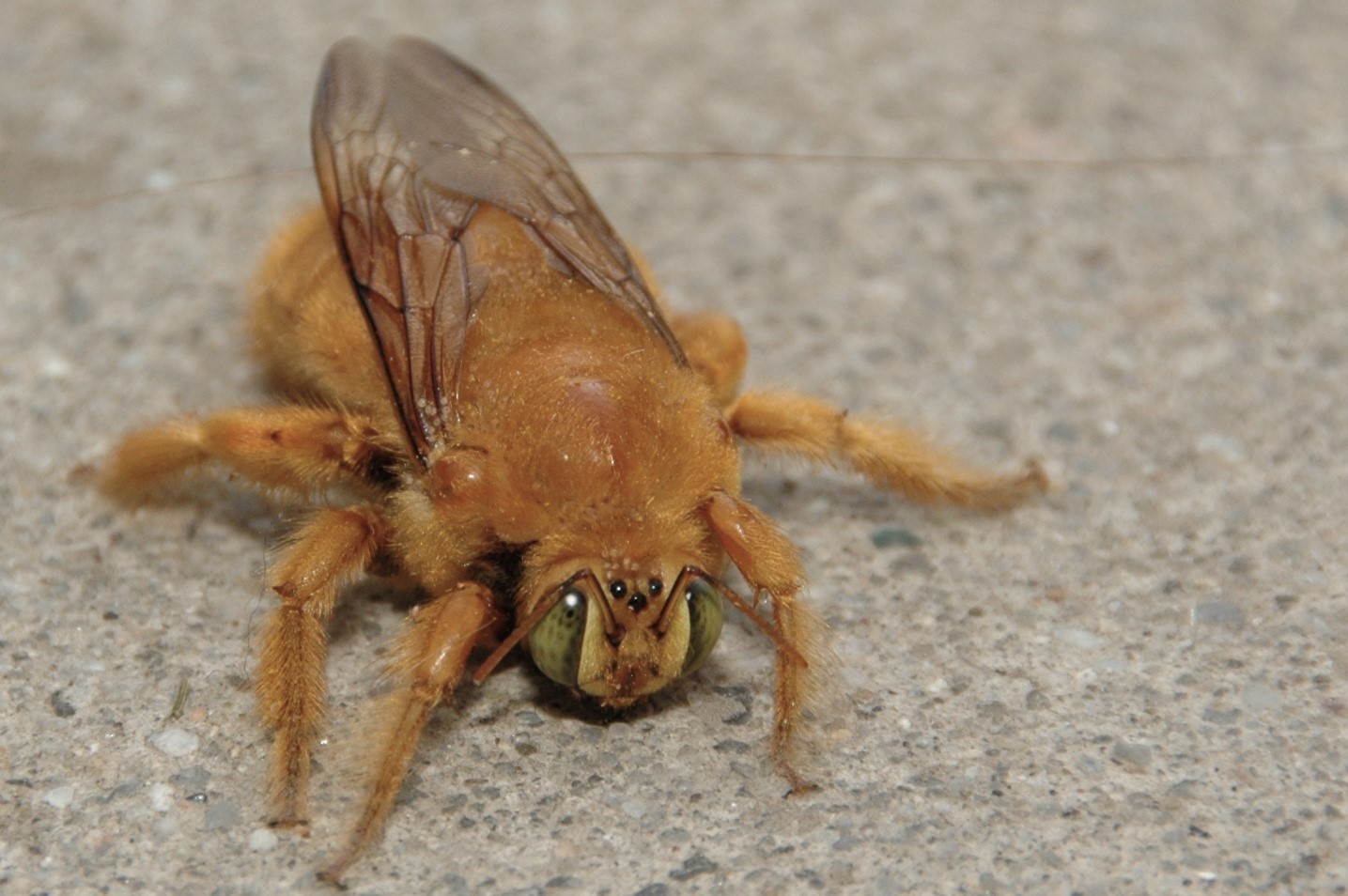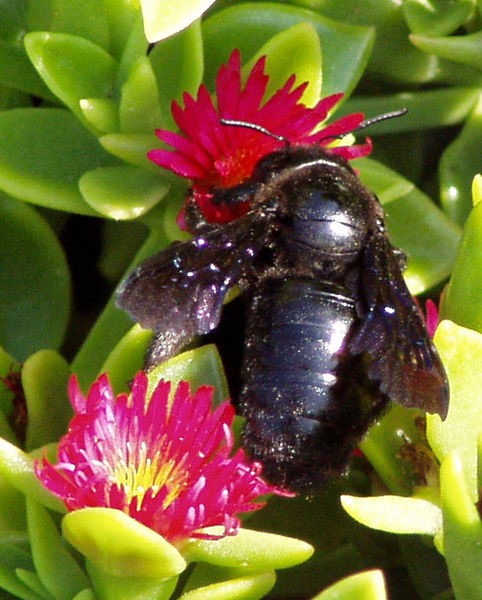Reproduction and Life History
To Bee or Not To Bee
Disagreement in the scientific field seems to be overabundant, and downright annoying.
With disagreement though, comes truth and understanding. Xylocopa varipuncta, better known
as the Valley Carpenter Bee, has been under controversy of late on the premise of insect sociality
(Hurd 1995). Due to the lack of Queen and/or worker bees in the nest, as well as distinct
individual males and females, the Carpenter bee family, including X. varipuncta, has been
proclaimed by scientists for many years as non-social (Hurd 1995). Interested in more fun facts?
Click here. Recently though, some scientists have discovered certain behaviors that have led
them to a different conclusion. Using

X-ray imaging technology,
Biologist have revealed that
some foraging X. varipuncta have
returned to the nest and fed others
(U.S. Forest Service 2013). These
reproductive, nurturing
characteristics and techniques favor
many similarities shared with social
insects, leading researchers and
scientists alike to label X. varipuncta
as “primitively social” (Nickerson 2001). Although X. varipuncta may not be considered a full-
fledged eusocial insect, the primitively social nature could suggest the beginnings of full sociality
for that species (Nickerson 2001). Quite possibly, in perhaps a thousand years, maybe X.
varipuncta will also be considered a social insect. If your interested in eusociality, trying learning
about Atta cephalotes.
In the X. varipuncta life cycle, males tend to
be the first out of hibernation in the spring (Hurd
1995). The males will then use that time to prepare for
the mating process by consuming large amounts of
nectar. They will then grow extremely territorial, using
a pheromone “secreted from their mandibular gland to
mark their territory”, and ward off other potential
males from stealing their potential partners (Keasar
2010). Once a female moves into a males territory, the
male will chase her, and in his best effort try to mount
her (Keasar 2010). X. varipuncta in particular, tends to mate in “non-resource” locations (Hurd
1995) Want to read more on either habitats or interactions? Click on either one of the links.
Life History
One of the interesting characteristics of X. varipuncta, is that it burrows itself into
wooded nests (Nickerson 2001). During mating, males and females will renovate and clean old
tunnels, as well as create new galleries, roughly six to eight separate chambers, for additional
larvae (Keasar 2010). Click here for more on habitat. Once fertilization has taken place, the
nesting females will lay eggs into separate existing galleries or chambers (Keasar 2010). Each of
these chambers is prepped with some pollen and nectar, better known
as Bee
 Bread, to feed the
Bread, to feed the
larvae (Penn State College of
Agricultural Sciences 2003).
The female will strategically lay
one egg on to each portion of
the Bee Bread before sealing it
off (Penn State College of
Agricultural Sciences 2003).
Once the larvae have hatched,
females will often guard their
young and help feed them by
“trophallaxis” (Keasar 2010). Trophallaxis is a highly developed behavior often seen among
social insects, where the associates of that community feed each other via mouth-to-mouth or
anus-to-anus (Jarau and Hrncir 2009). Touching back on sociality, occasionally, additional
females will help in the care of the offspring instead of nesting individually (Keasar 2010). In
August, after finished with developing, X. varipuncta will leavethe nest in search of nectar, but
will return to the nest with the coming of winter for hibernation (Hurd 1995).
So you want to learn more?
To learn about the classification of this species click here. If you are more interested in some
quick facts, try clicking here.

